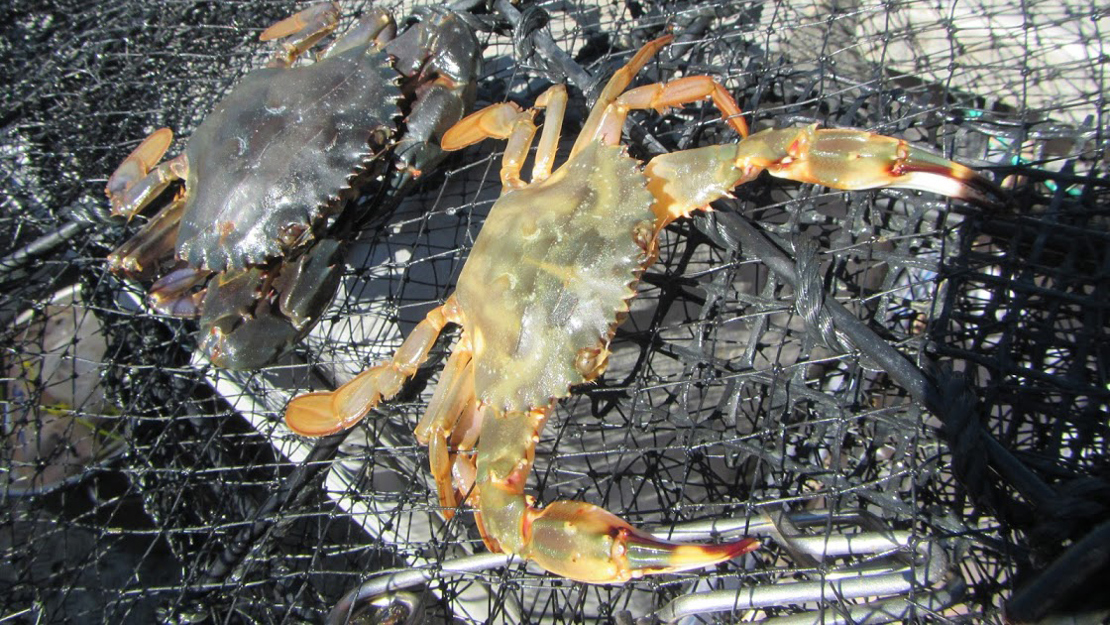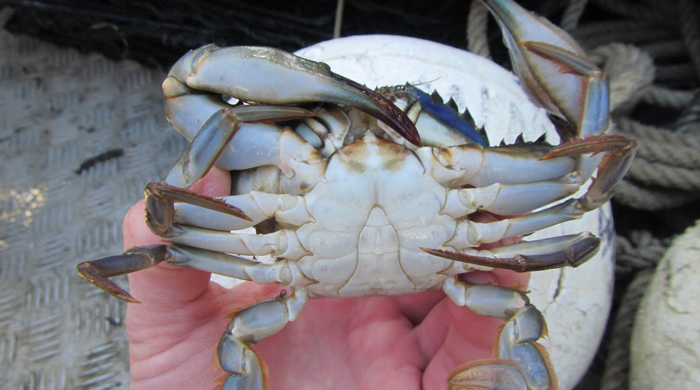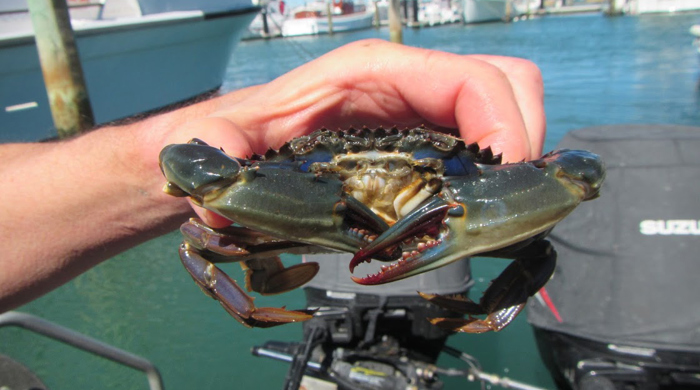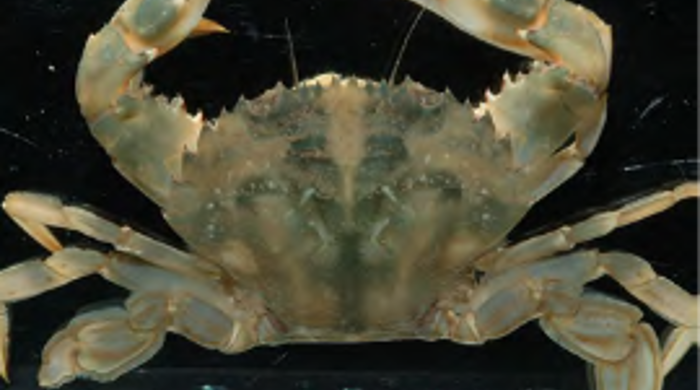Charybdis japonica
Asian paddle crab
Family: Portunidae
Origin: Japan, Korea, Malaysia

Regional Pest Management Plan (RPMP) status
- Whole region — Sustained control
General description
A relatively large swimming crab with paddle-like hind legs. The shell can reach 12 cm across. Adults have six distinct spines or spikes on each side of the shell below the eyes, and five prominent spines on the upper surface of each claw. The crab ranges in colour from pale-green or olive green to a deep chestnut brown with purplish markings on the shell.
What you need to know
To help protect our environment:
- You must not breed, distribute, release or sell any Asian paddle crab within the Auckland region. Dead individuals may be transported and eaten, provided that doing so does not distribute viable eggs.
- If you catch an Asian paddle crab you must kill it immediately.
- If you’re in charge of any craft in the Auckland region you must ensure that the level of fouling on the hull and in niches of the craft does not exceed ‘light fouling’.
- If you’re in charge of any craft in the Auckland region you must ensure that it is free of all ballast water, bilge water, holding tank water or sea water held in any other container when entering any marine body from the land.
Habitats
It is typically found in estuaries where there is firm sand, muddy fine sand, or muddy-shelly fine sand.
Impact on environment
The crab is very aggressive, displacing native crabs (pāpaka) and preying on a variety of native and aquaculture species including shellfish, fish, other crustaceans and polychaete worms. It is also a carrier of diseases that may greatly impact other crustaceans.
Control
Management
Before moving your boat or other craft to new locations, make sure the hull, anchor chain and all other equipment on board is clean and free of marine pests or other fouling.
Think about where you’re taking on or releasing ballast, bilge or holding tank water, or water in any other container such as chilly bins, to avoid spreading marine pests.
Find out more:
For more information on Asian paddle crabs and how to avoid spreading them, please visit Prevent pests from spreading or contact Auckland Council at pestfree@aucklandcouncil.govt.nz.






